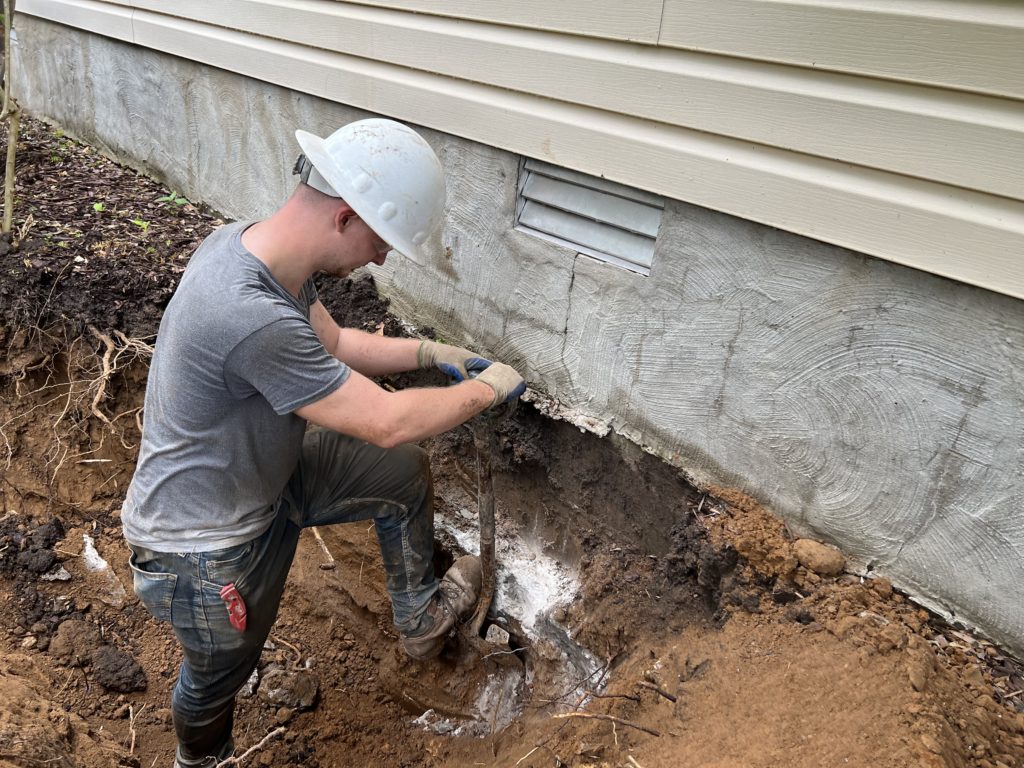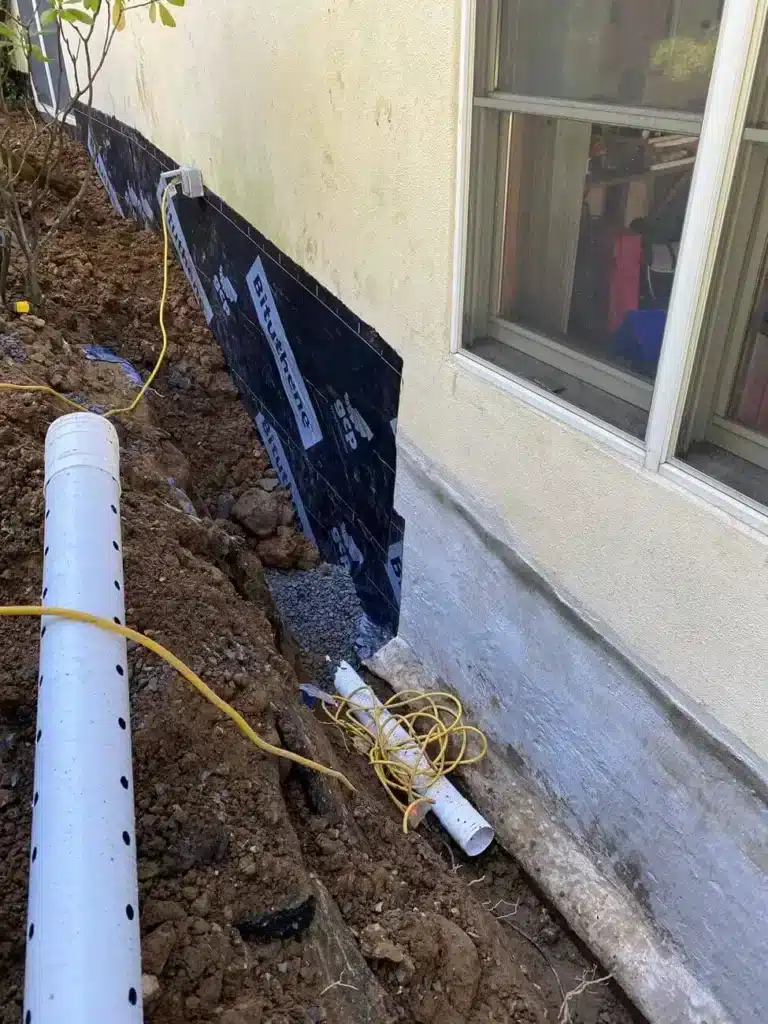Crucial Guide to Foundation Repair OKC: What Homeowners Need to Know
Wiki Article
Discovering Different Methods of Structure Repair Service for Different Dirt Types
Structure repair service is a critical element of keeping architectural integrity, specifically when taking into consideration the varied obstacles posed by different soil kinds. The complexity of dirt behavior under differing conditions requires a tailored approach to fix, making sure optimal solutions such as helical piers for unsteady soils or chemical cements for natural layers. The inquiry continues to be: how do we establish the most effective approach for each distinct scenario? Recognizing the interaction in between soil attributes and repair work techniques is important, yet there is even more to discover in the quest for lasting options. What elements truly determine the selection of approach?Comprehending Soil Kinds
Dirt types play a critical function in the security and durability of structure foundations, making it essential for home owners and building specialists to understand their qualities and actions. The communication between soil and foundation can figure out the structural stability of a structure. There are numerous dirt kinds, each with unique physical properties that impact just how structures are created and preserved.Granular soils, such as sand and gravel, provide excellent drainage and are usually thought about secure. In contrast, cohesive soils like clays and silts show various actions.
Rocky dirts, recognized for their strength and security, deal outstanding assistance for structures yet might call for customized tools for excavation. Conversely, loamy soils, which are a well balanced mixture of silt, clay, and sand, usually give desirable conditions for foundation assistance due to their modest drain homes.

Comprehending these soil types is vital for choosing suitable structure repair work methods, ensuring the sturdiness and security of structures over time.
Obstacles With Extensive Clay
Amongst the different soil types, expansive clay offers one-of-a-kind obstacles for foundation security because of its propensity to go through significant volume modifications with dampness variant. This kind of soil swells when wet and contracts when dry, which can exert substantial stress on frameworks. These variations can cause structure cracking, heaving, and settlement problems, positioning substantial risks to the structural stability of structures.The obstacles with expansive clay are aggravated by its plasticity index, which determines the soil's ability to alter form and quantity. A high plasticity index indicates greater potential for motion, increasing the likelihood of damage to foundations. This is especially bothersome in regions experiencing severe or constant climate adjustments, where cycles of wet and dry conditions are typical.
Furthermore, the deepness of expansive clay layers can differ, complicating the evaluation and preparation of appropriate structure repair work approaches. These complexities call for a comprehensive geotechnical assessment to make certain effective structure repair methods are implemented, highlighting the significance of resolving expansive clay difficulties with proficiency and treatment.
Solutions for Sandy Soils
Sandy soils, characterized by their big bit size and low communication, existing distinct difficulties for foundation security as a result of their propensity for changing and erosion. These residential or commercial properties require specialized structure fixing methods to guarantee structural honesty. One efficient solution is the usage of deep structure systems such as helical piers or driven heaps. By anchoring the structure to much deeper, much more steady soil layers, these systems can supply the necessary support to neutralize the moving nature of sandy dirts.One more recommended method is the application of soil stablizing approaches. Chemical grouting, for example, involves infusing a supporting agent into the soil, which enhances communication and lowers leaks in the structure. This procedure helps to strengthen the sandy substrate, thus minimizing the danger of erosion and movement.
Additionally, setting up appropriate drain systems is crucial in sandy dirt conditions. Making certain ample drain can avoid water buildup around the foundation, which often worsens erosion and dirt displacement. Strategies such as French drains pipes or surface grading can be utilized to route water far from the building border.
Attending To Settling in Loamy Soils
Loamy dirts, understood for their balanced mix of silt, clay, and sand, provide an abundant base for numerous frameworks yet can in some cases go right here result in foundation settling as a result of their distinct make-up. This balanced appearance offers exceptional drain and nutrient retention, making it optimal for farming and landscaping. Nevertheless, this same feature can come to be troublesome for foundations, as changes in moisture material can create the soil to broaden or contract, leading to clearing up.Exact soil testing is critical to identify the certain make-up and moisture content of the loam. Once data is gathered, executing correct drain services is essential to keep regular moisture levels, thereby minimizing the risk Read Full Report of dirt tightening or expansion.

Cutting-edge Repair Methods
In the realm of foundation repair, innovative strategies are continuously being established to address the complicated tests positioned by numerous dirt conditions. As dirt kinds differ significantly in their structural residential properties, conventional approaches might not constantly are enough. The development of brand-new technologies in structure repair service offers more customized services, making sure stability and durability.One notable advancement is using helical piers, which are especially efficient in extensive or unstable soils (foundation repair Oklahoma). These piers are screwed right into the ground till they get to a steady layer of soil, using solid assistance for the structure over. This approach reduces disruption and is adaptable to different soil types, making it a flexible remedy
Another cutting-edge method is the application of polyurethane foam injection. This approach involves injecting high-density polyurethane foam underneath the structure to fill up gaps and stabilize the framework. It is a much less intrusive choice to standard underpinning, offering fast installation with marginal disruption to the surrounding location.
Furthermore, dirt stablizing approaches, such as the use of chemical grouts, have actually gotten grip. These compounds boost soil strength and decrease permeability, stopping future shifting. Collectively, these cutting-edge repair work methods offer efficient services for the diverse difficulties presented by varying soil conditions.
Conclusion

Structure fixing is a critical aspect of preserving architectural integrity, particularly when thinking about the diverse difficulties postured by different soil types (foundation repair okc). The intricacy of dirt behavior under varying problems demands a tailored technique to repair, ensuring ideal remedies such as helical piers for unstable soils or chemical grouts for cohesive layers. By anchoring the foundation to much deeper, extra secure dirt layers, these systems can provide the required assistance to counteract the shifting nature of sandy soils
Foundation repair requires careful consideration of dirt types to ensure stability and long life. Chemical grouts enhance soil strength and reduce permeability in natural dirts.
Report this wiki page